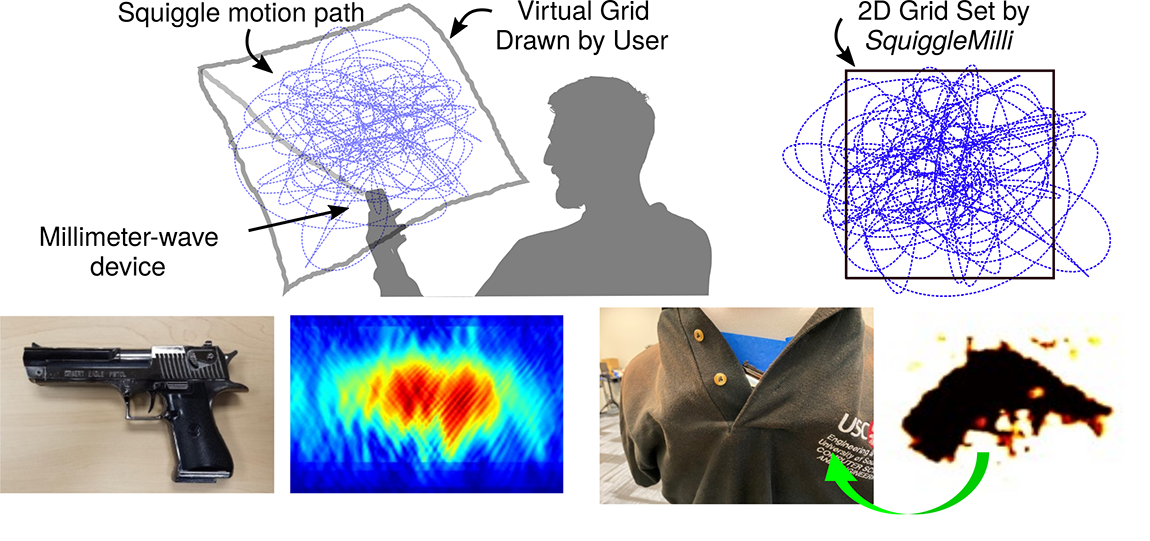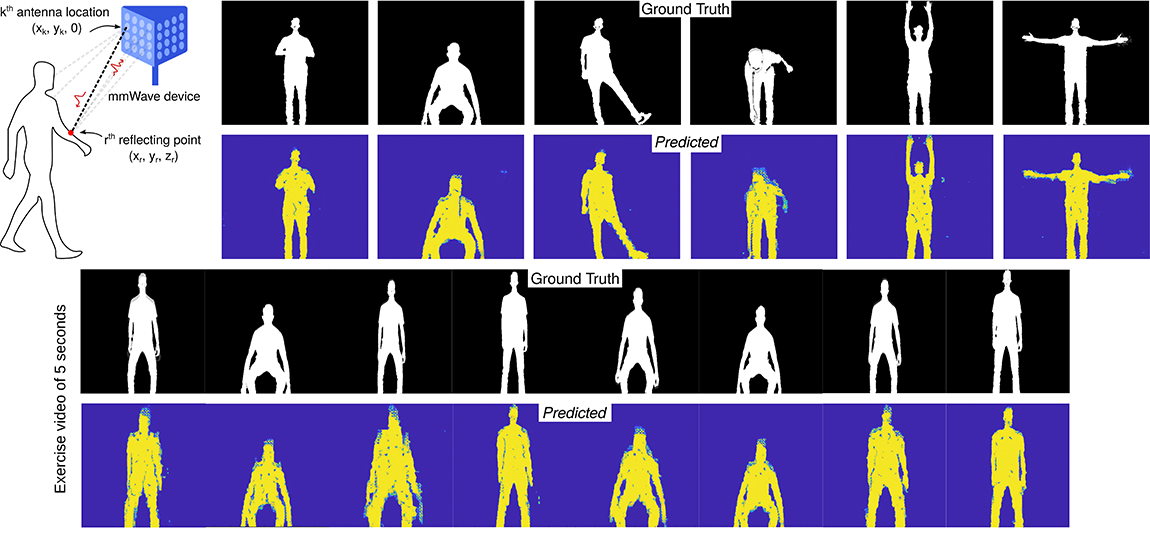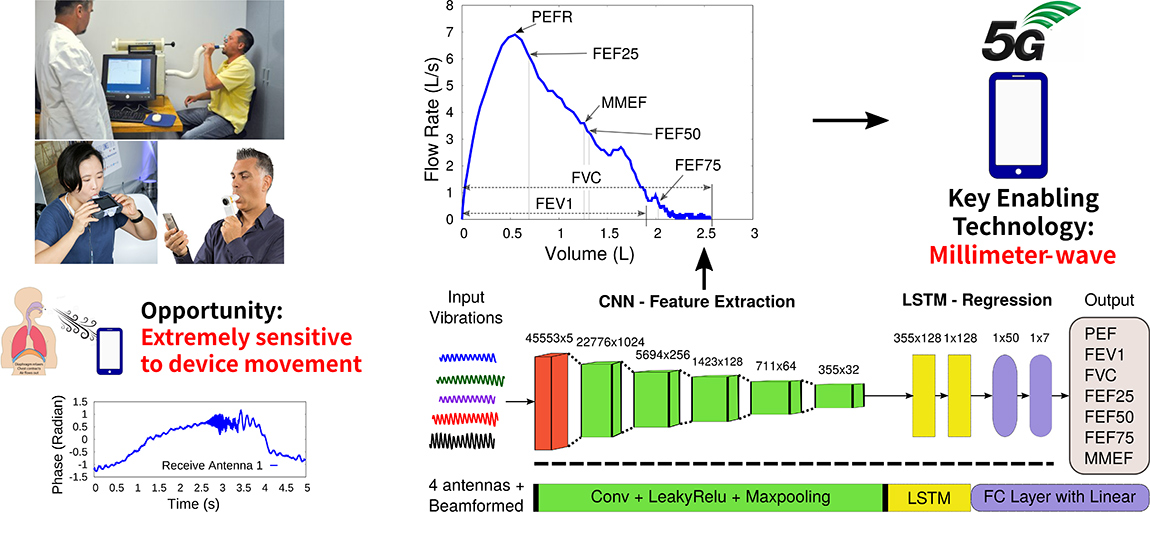Ubiquitous Sensing
Beyond-Vision Imaging
Millimeter-wave (mmWave) systems enable through-obstruction imaging and are widely used for screening in state-of-the-art airports and security portals. They can detect hidden contrabands, such as weapons, explosives, and liquids, by penetrating wireless signals through clothes, bags, and non-metallic obstructions. Besides, mmWave imaging systems could enable applications to track beyond line-of-sight, see through walls, recognize humans through obstructions, and analyze materials without contaminating them. MmWave systems also have advantages over other screening modalities: Privacy preservation and low-light condition usages over optical cameras; very weak ionization effect over X-Ray systems; and shape detection of non-metallic objects over metal detectors. Furthermore, the ubiquity of mmWave technology in 5G-and-beyond devices enables opportunities for bringing imaging and screening functionalities to hand-held settings. However, existing systems require support from infrastructures and are unsuitable for wide deployment. To this end, we are designing and validating practical mmWave imaging systems that are portable and deployable in ubiquitous mmWave devices. We plan to integrate these works on autonomous drones and cars to facilitate safe and secure navigation in the wild under hazardous environmental conditions.
Projects:
[SquiggleMilli] [MiShape] [DeepPCD]
Articles:
Supported by:
Biomarkers and Activities Detection
The need for understanding and perceiving at-home human activities, biomarkers is critical in numerous applications, such as monitoring behavior of elderly patients in assisted living conditions or detecting fall or monitoring recovery of patients post-surgery or post-stroke. Optical cameras, IRs, LiDARs, etc., can be used to build such applications, but they depend on light or thermal energy radiating from the human; so, they do not perform well in occlusion, low light, and low visibility conditions. Additionally, cameras impose a major privacy-invasive and are often undesirable for users to implement inside their home or office. In contrast to the vision-based systems, millimeter-wave (mmWave) technology in 5G-and-beyond devices illuminate targets using high frequency mmWave signals and can enable applications to track beyond-line-of-sight, see through walls, identify human through-obstruction, and estimate micro-activities and micro-gestures. They also provide an advantage over the camera-based system by preserving users’ privacy. We are currently designing robust systems to bring privacy non-invasive human motion capture and biomarker detection systems at-home. We are actively collaborating with researchers from the Arnold School of Public Health and doctors from the School of Medicine to bring these technologies to practice.
Articles:
Supported by:






